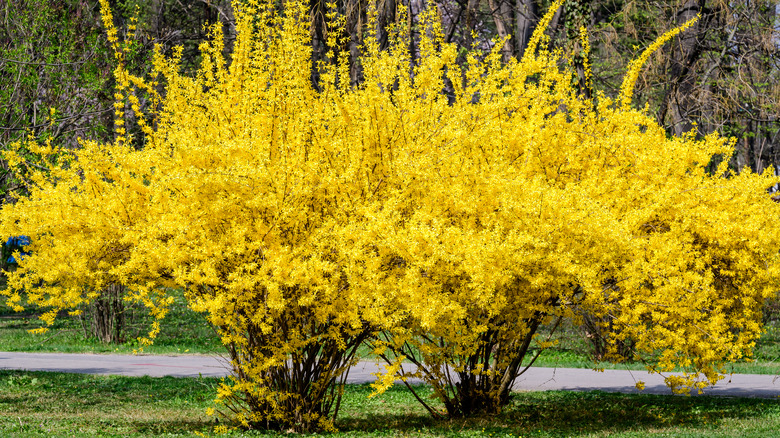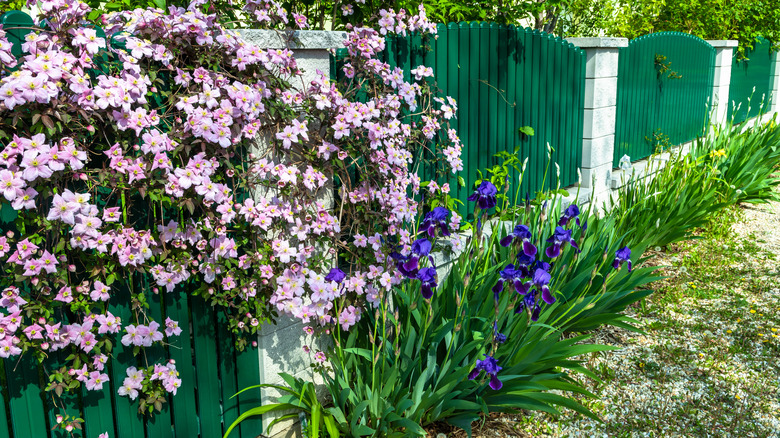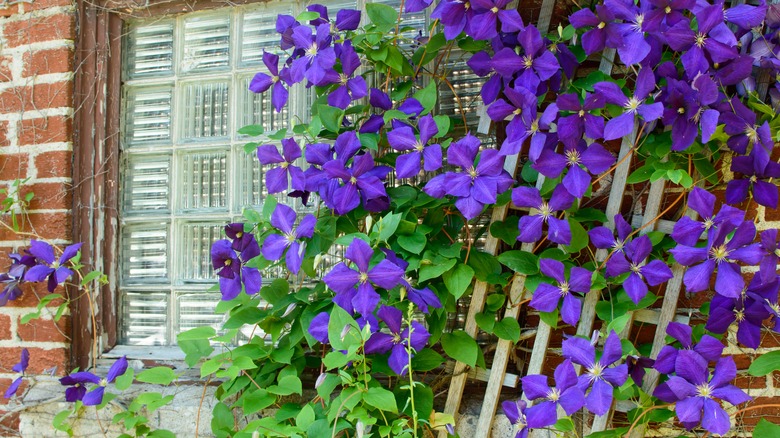Plant This Flowering Vine With Forsythia For A Wall Of Continuous Color This Summer
If you have a forysthia shrub in your yard, no doubt you (and your neighbors) look forward to the bright yellow flowers in early spring. But after their short-lived spring show, forsythia shrubs are not all that exciting. They fill up with lush green leaves all summer, but other than that, this shrub is not very interesting. One way to liven up your forsythia after the spring blooms fade is to plant flowering vines beneath them that will grow up into their dense branches. Clematis vines are a good choice to plant nearby as they bloom from late spring into summer.
There are two main things to pay attention to when planting clematis vines that will climb into your forsythia. First, be sure that when pruning your forsythia you are also taking care to properly prune your clematis vines. Proper forsythia care includes pruning it regularly to help maintain its shape and keep it from getting too overgrown, which can lead to stem galls on its branches. Autumn is a good time to do this, to get it neat and ready for its early spring flowering season.
The second thing to consider is whether the clematis vines will get enough sun to form blooms. Many clematis vines require full sun, but some varieties can thrive in partial sun or even bloom in shade. These shade-tolerant clematis are the varieties you should choose from.
Which clematis varieties to plant by your forsythia
Clematis vines are often categorized into several different groups based on how and when they are pruned. Clematis tend to bloom on "old wood" or "new wood" (referring to where new buds appear) and this affects pruning techniques. When you choose your clematis, be sure to look into its pruning needs. For a vigorous bloomer in partial sun conditions, the top choice is Clematis montana, also known as mountain clematis or anemone clematis, as the flowers resemble pink anemones.
Clematis montana is very floriferous, with several named varieties that are covered in small pale pink blooms. It takes a year or two to get established, but once it does you can expect gorgeous flowers from late spring through midsummer. The most common cultivars are 'Mayleen' and 'Pink Perfection'. Both are hardy in USDA zones 6 through 9 and can grow 20 to 40 feet tall, spreading throughout a large forsythia and, covering its branches with pink flowers. Prune the vines at the end of the season to keep them under control.
For colder zones, other partial-sun loving clematis include 'Nelly Moser' (large pink and purple flowers), 'Pink Mink' (two-toned pink flowers with slightly curving petals and 'Comtesse de Bouchard' (medium coral pink flowers). 'Acropolis' has bright magenta flowers. A new cultivar with small periwinkle blue flowers that blooms in partial sun is known as 'Skyfall'. All of these splendid cultivars are hardy in USDA zones 4 through 9.
Tips for planting clematis near your forsythia
Clematis is a climbing vine that needs some kind of support. It can climb on a wall, a trellis, a fence, or a shrub. Since forsythia shrubs can get very large, consider the shrub's growth over time before you plant a clematis vine. Ideally you want the clematis vine in a spot where the forsythia's root system won't interfere with it. Planting it 18 to 24 inches from the base of the forsythia means the two plants can co-exist without problems for at least a few years.
Plant the clematis vine where the flowers will get as much sun as possible since the forsythia branches will obscure some sunlight. The base of the clematis vine likes to be slightly shaded, but the flowers do need a bit of sun to bloom. Afternoon sun is optimal as it tends to be brighter, but morning sun is also fine. Clematis prefer neutral to slightly alkaline well-drained soil, so before planting, add the appropriate soil amendments to get the spot ready.
Clematis also need regular watering, and being planted beneath a forsythia can make this a bit tricky. While regular rainfall will add moisture, your clematis will probably need supplemental watering to keep it healthy, so water it with a hose. Use care when pruning your forsythia, and prune it separately from the clematis vine so you can focus on each plant's specific pruning needs.


